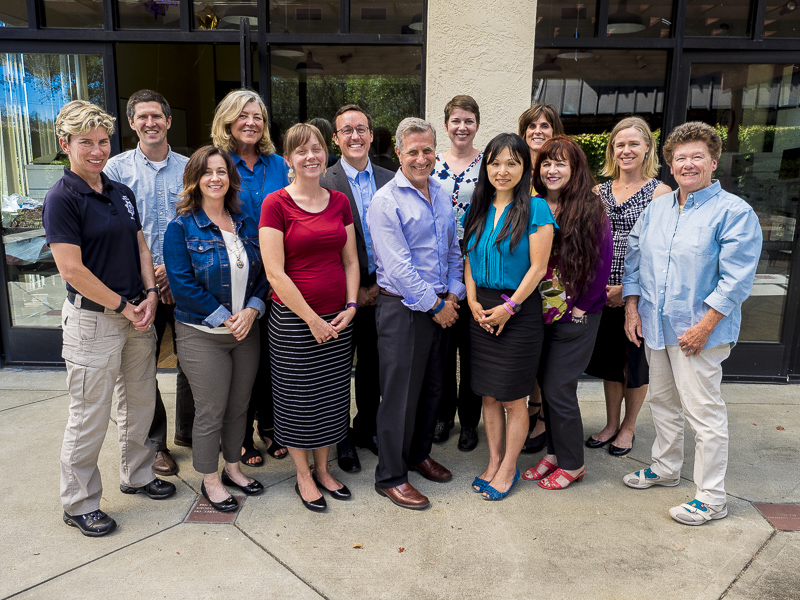
Even though we know we shouldn’t attribute the characteristics of a minority to the overall group, we do that all the time with homeless people. Communities that are ending homelessness have understood that individualization is the key to success. When we do this, new insights emerge, and we begin to see that there is a small group of individuals causing a significantly disproportionate impact in our community.




People in “Tier 3” are generally referred to as the “chronically homeless.” And just as visibility is skewed towards the chronically homeless, so are costs. Using data from Santa Clara County, in 2015 the Economic Roundtable conducted the most comprehensive cost study on homelessness in the country. Our neighbors in the South Bay spend a staggering $520 Million a year on homelessness. Perhaps more shocking than the total itself is how the money is actually spent. Social service agencies (think Ritter, St. Vincent’s, Homeward Bound) only account for 13% of that total. The remaining ~ 90% is divided among healthcare, mental health, and criminal justice (all County systems in Marin). The vast majority of these resources go to revolving door interventions for the chronically homeless.

A New Approach …
- It’s Hard– Ok, that sounds circular, but really, without the right methodology, it’s extremely hard to help these folks. Moreover, nonprofits and the agencies that fund them want results. We absolutely have to help people in Tier 1, Tier 2, and Tier 3 at the same time, but if we create programmatic structures and hurdles to assist people in Tier 1 and Tier 2, we have to make sure we’re not simultaneously undermining access for Tier 3.
- Silos – Unlike individuals in Tier 1 or 2, people in Tier 3 have mutli-dimenenisal issues (the technical term is co-occuring disorders). Like other cities and counties across the country, for these hardest-to-serve individuals, our continuum of care has done a bad job coordinating across agencies.
- Generalizing – Just like society’s overall tendancy to stereotype the homeless, our continuum of care has historically generalized Tier 3. The reality is that even though they’re a relatively small group, each person is still an individual with unique problems. We have to triage each person.

Earlier this year, largely thanks to the leadership of St. Vincent’s Executive Director Christine Paquette and Housing Director Howard Schwartz (pictured aboved), our community began piloting a new approach called HOT (Homeless Outreach Team). Our version of HOT was pioneered in San Mateo, which was facing a similar crisis from chronic homelessness in their downtown a few years ago (it is now dramatically improved). The HOT process is relatively simple:
- Create your HOT list, which is a list of the most challenging and hard-to-serve individuals in your community. We based our list on feedback from the Fire Department, Police Department, and downtown outreach workers. When the pilot list was finalized, there was a lot of “Wow, good luck.”
- Bring together every provider that might be able to help (St. Vincent’s, Ritter, the City of San Rafael, Health and Human Services, County Mental Health, Probation, Marin Housing Authority, the District Attorney’s Office, Homeward Bound) create and implement a customized housing plan for each person on the HOT list. Between meetings, each provider will be accountable for completing action items that help each person progress towards housing
- Make sure front-line and senior staff are included, so that in the process of helping individuals, we can also address system gaps that stifle effective service provision. Absolutely vital to this process has been Health and Human Service’s Chief Assistant Director Heather Ravani and Marin Housing Authority’s Deputy Director Kimberly Carroll. Success is measured by permanence, and we need to redesign our service systems to prevent people from returning to the street.
The Impact …
We started the HOT pilot five months ago with the 12 hardest-to-serve individuals in downtown San Rafael. 11 of these individuals are currently off the streets. 4 people are in a residential alcohol treatment program, 3 people are in mental health programs, 1 person has been connected with medical respite care, and 3 are currently in custody as we make arrangements for treatment options once they are discharged. In terms of the numbers:



